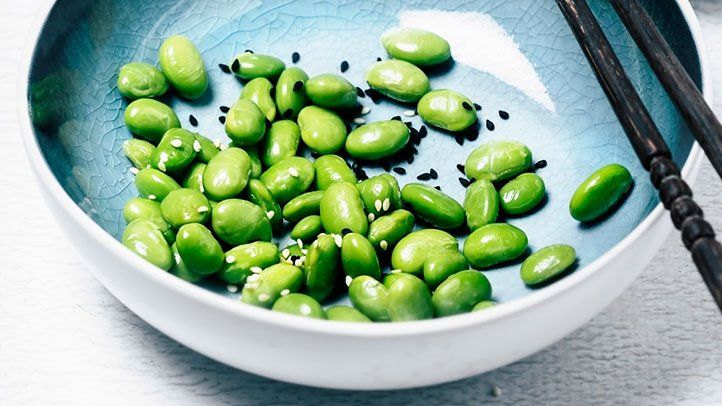Edamame 101: A Complete Guide
What is Edamame?
Edamame is a popular and nutritious snack that consists of young soybeans still in their pods. These green soybeans are harvested before they fully mature and are commonly served as a healthy appetizer or side dish in many Asian cuisines. Edamame is not only delicious but also packed with essential nutrients such as protein, fiber, and vitamins.
Health Benefits of Edamame
Edamame is a nutrient-dense food that offers a range of health benefits. Some of the key benefits of consuming edamame include:
- Rich in protein: Edamame is an excellent source of plant-based protein, making it a great option for vegetarians and vegans.
- High in fiber: The fiber content in edamame helps with digestion and can contribute to a feeling of fullness, which may aid in weight management.
- Packed with vitamins and minerals: Edamame is a good source of vitamins C and K, as well as minerals like iron and magnesium.
- Low in calories: Despite being nutritious, edamame is relatively low in calories, making it a guilt-free snack option.
How to Cook Edamame
There are several ways to prepare and cook edamame, depending on your preference. Here are some common methods:
- Boiling: To boil edamame, simply add the pods to a pot of boiling water and cook for 5-10 minutes, or until the beans are tender. Drain, season with salt, and enjoy!
- Steaming: Steaming is another popular method for cooking edamame. Place the pods in a steamer basket over boiling water and steam for 5-7 minutes. Serve hot with your favorite seasonings.
- Roasting: Roasting edamame in the oven is a great way to achieve a crunchy texture. Toss the pods in olive oil and your choice of seasonings, then roast at 400°F for 15-20 minutes, stirring occasionally.
Edamame in Culinary Uses
Aside from being a popular snack, edamame can be incorporated into many dishes for added flavor and nutrition. Some creative culinary uses for edamame include:
- Adding to salads: Edamame can be a delicious and protein-packed addition to salads, providing a satisfying crunch.
- Making dips and spreads: Blend cooked edamame with garlic, lemon juice, and olive oil to create a creamy spread that can be enjoyed with crackers or veggies.
- In stir-fries: Edamame can be added to stir-fried vegetables for an extra boost of protein and texture.
Conclusion
Edamame is a versatile and nutritious ingredient that can be enjoyed in a variety of ways. Whether as a snack, side dish, or ingredient in a main course, edamame offers numerous health benefits and delicious flavor. Incorporating edamame into your diet can be a simple yet effective way to boost your intake of essential nutrients and add variety to your meals.
FAQs
Q: Is edamame gluten-free?
A: Yes, edamame is naturally gluten-free, making it a safe option for those with gluten sensitivities or celiac disease.
Q: Can I eat the edamame pods?
A: While the edamame pods are not typically eaten, some people do enjoy munching on the pods for the added fiber content. However, it is recommended to only consume the beans inside the pods for best taste and digestion.
Q: How should I store leftover edamame?
A: Leftover edamame can be stored in an airtight container in the refrigerator for up to 3-4 days. Simply reheat before serving or enjoy cold as a snack.




